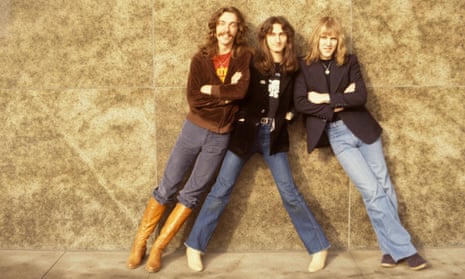Last weekend, Rush guitarist Alex Lifeson confirmed what many had suspected for a while: that the band are pretty much done. Neil Peart, the drummer (and for lots of fans, the band’s most beloved member), declared himself retired at the end of their 2015 North America tour, and now Lifeson has told the Toronto Globe and Mail: “It’s been a little over two years since Rush last toured. We have no plans to tour or record any more. We’re basically done. After 41 years, we felt it was enough.”
It’s a suitably low-key, unrockstarlike way for the band to depart, because the heart of Rush’s appeal was the way they managed to do almost everything in a wholly unrockstarlike way, even if they were rarely low key.
In the late 1970s, many older rock fans – and the music press – saw them merely as twiddly-widdly prog rockers. But their magnificently overblown fantasy epics were starting to win an increasingly enormous teenage fanbase, swept away by the Canadian band’s unbounded imagination. They were the kids who studied the album covers for the visual puns (Hemispheres, Permanent Waves and Moving Pictures especially), who doodled Rush logos on their school books.
A few decades later those teenagers were writers, editors, musicians and film-makers who didn’t regard the Canadian trio with the embarrassment of their elders. The principal characters’ love of Rush became the backdrop to the 2009 bromance I Love You, Man; they appeared in South Park, playing a parody of Candle in the Wind; Stephen Malkmus puzzled over them in the Pavement song Stereo: “What about the voice of Geddy Lee / How did it get so high? / I wonder if he speaks like an ordinary guy? / I know him and he does.” Chris Morris dropped the names of the members of Rush into the credits for his TV series Black Eye, while the teen TV drama Freaks and Geeks dripped with Rush references.

In the fantastic, heartwarming documentary Rush: Beyond the Lighted Stage – in which the pleasure the three members of Rush took in their music and each others’ company was delightfully apparent – younger musicians queued up to pay tribute. “When people look back and decide who the great bands were, they will be one of them,” said Smashing Pumpkins’ Billy Corgan.
So much of what Rush did, especially in the 1970s, seemed to be what a 14-year-old might have done. What shall we wear? Kimonos! Our last album was a flop and our management have promised our label singles, what shall we do? Record a side-long sci-fi suite inspired by Ayn Rand! How many notes can we fit into a single song? How about 35,000!
You could see that odd naivety at work even when the nods to Ayn Rand on their album 2112 provoked accusations from the NME that Rush – a band whose singer’s parents were Holocaust survivors – were far-right sympathisers. Neil Peart, who wrote the lyrics, went on a long diatribe about personal freedom in the magazine’s 4 March 1978 edition, perhaps thinking he was engaged in a theoretical argument, not realising it would result in the writer describing the band as “roaming the concert circuits preaching what to me seems like proto-fascism”.
You could see it in Beyond the Lighted Stage, when the band and their crew – and Gene Simmons – remember Rush opening for Kiss across North America in the mid-70s. Simmons recounts with relish the sexual opportunities open to even an ugly man in a band, remembering with astonishment that the members of Rush simply went to their rooms each night.
The lack of rock-star affectations carried on. Geddy Lee tired of the pretence of having amps and speaker cabinets on stage – in any large venue, the bassist plays straight through the PA. When fans complained about the lack of large boxy objects behind him, Lee relented – and started putting a stack of washing machines or rotisserie ovens where the amps would have stood.
Rush’s commercial peak came because they were more than the prog rockers their detractors thought they were. In the late 1970s, Peart especially had become interested in new wave, and Permanent Waves and Moving Pictures – the true smash hit albums – came replete with echoes from the Police, Talking Heads and more. They were still a prog band, but a different kind of prog band, and that shone through in Peart’s lyrics.
Finally, they became a band whose relationship with their fans became deep and personal, as Peart reflected their feelings in songs like Entre Nous, or the 1982 single Subdivisions, a song about teenage alienation every bit as heartfelt as anything Morrissey came up with. It was more than a little ironic that the man who wrote the lyrics the fans so connected with was too shy to ever enjoy meeting his admirers.
Rush might have retrenched over the last couple of decades – they returned to being a power trio in the 1990s, largely at the insistence of Lifeson, who wanted to make his guitar central to the group after an 80s dominated by synthesisers – but they never shrank. To the last, they could play arenas, because they were so loved. Now they are gone, and how perfect it is that they have gone so quietly and gracefully: no rows, no deaths, no crisis. Just three friends doing what they want to do, the best way they know how.

